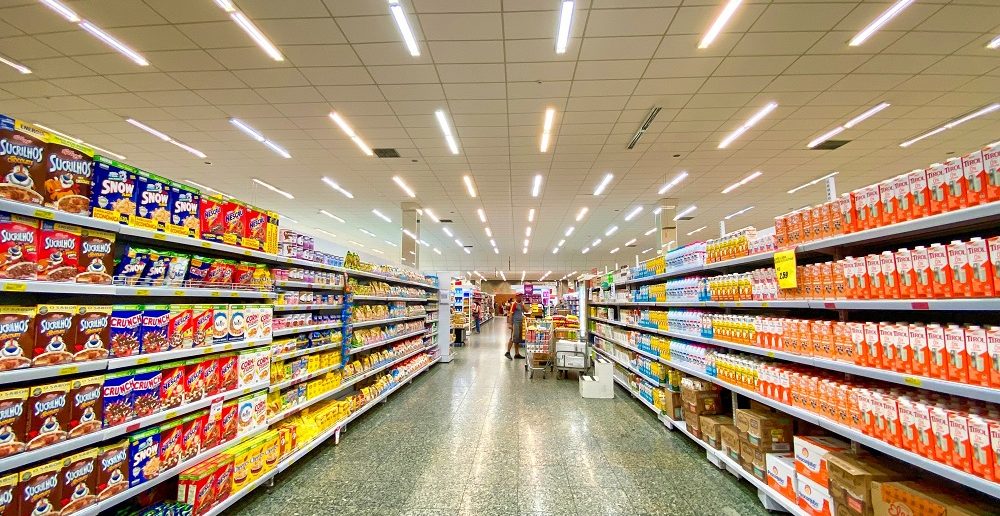In many countries, retail has been right at the centre of the coronavirus storm. Some retailers – those selling essential goods – have been unable or barely able to keep up with demand. Other sectors, notably clothes and luxury goods, have seen a complete drop-off in demand. Some retailers have found that the pandemic has been the last straw, and have had to call in the administrators. I caught up with Antonio Calvo, SAS Head of Retail and CPG for the EMEA region, to talk about retail in lockdown and beyond.
Antonio, what can we learn from countries that experienced lockdown earlier?
Well, there are obviously the broad-brush lessons: the huge rise in demand for online access to groceries, for example. However, there are also a number of interesting and unexpected patterns that emerge from the data in Italy. For example, if we look at traffic in particular retail sectors, we can see that in the areas of grocery and pharmacy, traffic broadly mirrors the curve for daily confirmed cases. So as the number of daily confirmed cases goes up, traffic goes down, and vice versa. It’s actually pretty responsive. However, the broader retail and recreation sector is not affected so quickly. Instead, that mirrors the stringency curve. So these are details that retailers could be using to predict demand.
How can retailers generate better demand forecasts during the disease outbreak?
Retailers need to be able to respond rapidly and intelligently to what is happening at the time. Useful tools to support this include analytically driven forecast modifiers that can be coupled with business insights. The key is to be able to sense changes quickly, which means rapid use and analysis of data. Retailers need to be analysing product mix trends and predicting demand shifts across channels in particular. For instance, nobody really predicted the huge increase in online demand that has been seen in many countries, even though you might suggest that it was more or less inevitable.
And looking ahead, how can retailers improve forecasts and predictions for the recovery period?
Keeping models updated is essential. There are a number of actions that might help. First, retailers need to incorporate calendar event and external variables into the models. It may also be helpful to do some modelling across a range of scenarios. These should include the occurrence of particular events, and variations in their duration as well as the likelihood of any recurrence. This will give a range of predictions, allowing more intelligent planning. Machine learning algorithms may be helpful because they learn from experience, so will update with new data.
What are we likely to see as the world returns to normal? Will there be a ‘new normal’ or ‘business as usual’?
It will be interesting to see what happens. We know from previous outbreaks of disease and other disasters that demand usually returns to normal after a crisis. The pattern of recovery often varies by sector, though. Demand for perishable goods stabilises rapidly. There tends to be a "pantry dip" for essential goods that can be stored until people have used up their stocks. Demand for luxury goods generally bounces back quite fast after an initial dip. However, most previous disasters were more local: one country, or two or three at most. We don’t know what will happen on a worldwide scale. However, we can get some idea as China starts to return to normal, and as other countries also move out of restrictions.
How can retailers plan for the inevitable shifts in demand and changes in consumer behaviour that will happen post-pandemic?
It is important for retailers to keep updating their forecast models. I think demand sensing will be crucial to ensure demand planning stability. They need to have a complete and sophisticated understanding of the implications of what is happening – and that means good data and good model governance. Demand sensing models need to draw on both internal and external data. Internal data includes sales demand history, inventory levels, details about promotions and prices, and product and location features. Ideally, they also need data about online traffic, and store closures and reopening dates. External data should include the number of cases of COVID-19 and the infection rate, economic indicators and social media data, as well as information about competitors and market trends. Retailers need to gather good data and use it effectively – and then they will be able to plan appropriately.
Join our on-demand webinar at your preferred listening hours: How the retail industry can embrace the new reality in demand, supply and customer experience domains.

